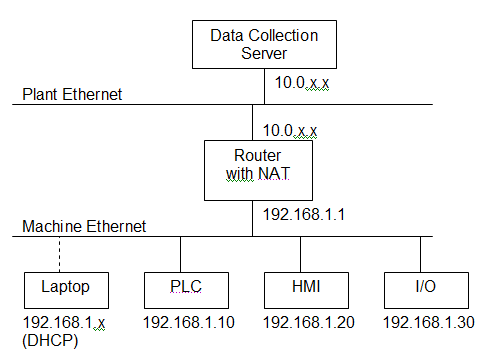Let’s assume you already know everything there is to know about motion control… you can jog a servo axis, home it, make it move to a position using trapezoidal or s-curve motion. Now what?
Sooner or later you’re going to find yourself with 2 or more axes and you’re going to want to do something fancy with them. Maybe you have an X/Y table and you want it to move on a perfect 45 degree angle, or you need it to follow a curved, but precise, path in the X/Y plane. Now you need coordinated motion.
Coordinated motion controllers are actually quite common. Every 3, 4, or 5 axis mill uses coordinated motion, every robot controller, and even those little RepRap 3D printers. What you may not know is that most integrated motion solutions you might encounter in the PLC world also offer coordinated motion (a.k.a. interpolated motion) control. If you’re from the Allen-Bradley world, the ControlLogix/CompactLogix line of PLCs allows you to use the Motion Coordinated Linear Move (MCLM) and Motion Coordinated Circular Move (MCCM) instructions along with a few others. If you’re from the Beckhoff world, you can purchase a license for their NC I product which offers a full G-code interpreter, which is the language milling machines and 3D printers speak.
Under the hood, a coordinated motion control solution offers several features necessary for a workable multi-axis solution. The first is a path planner, the second is synchronization.
The job of the path planner is fairly complex. If you say that you need to move your X/Y table from point 5,2 to point 8,3 then it needs to take the maximum motion parameters of both axes into account to make sure that neither axis exceeds it’s torque, velocity or acceleration/deceleration limits, and typically it will limit the “velocity vector” as well, meaning the actual speed of the point you’re moving in the X/Y plane. Furthermore, it must create a motion profile for each axis that, when combined, cause the tooling to move in a straight line between those points. After all, you may be trying to move a cutting tool along a precise path and you need to cut a straight line. To make matters far more complicated, after the motion is already in progress, if the controller receives another command (for instance to move to point 10,5 after the initial move to 8/3) then it will “blend” the first move into the second, depending on rules you give it.
For instance, let’s say you start at 0,0, then issue a move to 10,0 but then immediately issue a second move to 10,10. You have to option of specifying how that motion will move through the 10,0 point. If you issue a “fine” move then the X axis has to decelerate to a stop completely before the Y axis starts its motion. However, you can also tell it that you only care that you get within 1 unit of the point, in which case the Y axis will start moving as soon as you get to point 9,0 and will do a curved move through point 10,1 on its way to 10,10 without ever moving though point 10,0. This is actually useful if you’re more concerned with speed than accuracy. Another option you have is to issue a linear move to 9,0 followed by a circular move to 10,1 (with center at 9,1) followed by a linear move to 10,10. That will cause the tooling to follow a similar path, but in this case you’re in precise control of the curved path that it takes. In neither case will either axis stop until it gets to the final point.
The other important feature of coordinated motion is synchronization of the axes. Typically the controller delegates lower level control of the axes to traditional axis controllers, and the coordinated motion controller just feeds the motion profiles to each axis. However, it’s imperative that each axis starts its motion at precisely the same time, or the path won’t be correct in the multi-dimensional space. That requires some kind of clock synchronization, and that’s the reason why you see options for things like Coordinated System Time Masters on ControlLogix and CompactLogix processors.
That was very brief, but I hope it was informative. If you do have to tackle coordinated motion on your next project, definitely allocate some time for reading your manufacturer’s literature on the subject because it’s a fairly steep learning curve, but clearly necessary if your project demands it.
